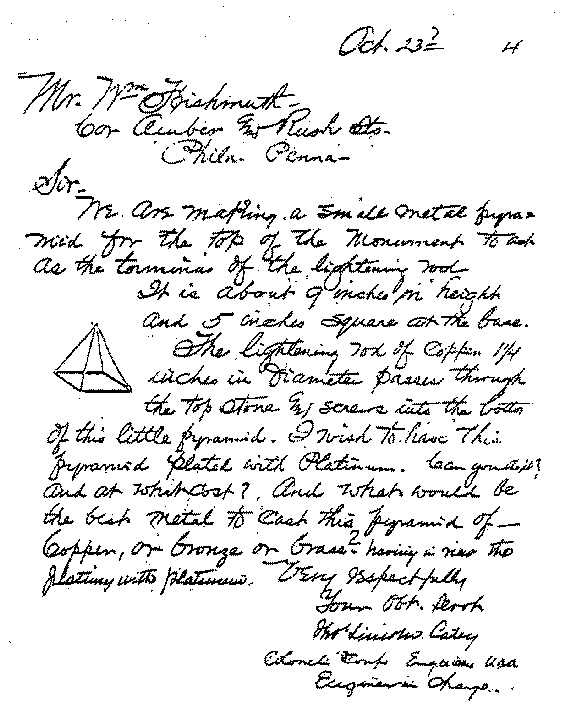The US Mint’s artists included a portrait of the head of the Statue of Freedom on the obverse of the Congress Bicentennial commemorative half dollar.
The statue rests atop the dome of the nation’s capitol. As the highest point, it needs to collect and discharge electricity during storms.
As noted in the Architect of the Capitol description, ten bronze points coated in platinum are on the headdress and shoulders of the statue. If you look closely at this picture of the Statue of Freedom from their web site, at least some of the “lightning rods” can be seen.

Platinum is non-corrosive, withstands high temperatures and is stable electrically. Perhaps that is why the engineers used platinum on the lightning rods.
For the everyday household, platinum might just be too expensive, even in small amounts, to be a generic lightning deflector.
Many years ago, however, platinum tipped lightning rods were much more prevalent – before platinum became so valuable as a metal.
In the Jewelers’ Circular, Volume 83, Issue 2, from 1921, they talked of the rise in platinum prices and described instances of theft:
In particular, the famous Notre Dame Cathedral had its massive doors cut in order for thieves to gain access to the towers and the platinum balls on the cathedral’s lightning rods.
The estimated loss was roughly 16 troy ounces of platinum or $1000. Today that $1000 would be roughly $12,600 in 2011 dollars.
But, with platinum at $1829 per ounce on today’s market, those 16 troy ounces would be just over $29,000. It would be interesting to know if they replaced the platinum on the cathedral’s rods back in the 1920s or if they chose a cheaper metal.
The New York Times in January 1922 used an extract from the jewelers’ information in their article New Sources For Platinum decribing the increasing platinum market.
But, even earlier, in the 1880s when the Washington Monument was being completed, the engineer in charge of the project suggested platinum for the cap (see Making the Cap) to deflect the electricity to the ground.
In his letter to the foundry, the engineer stated, “I wish to have this pyramid plated with platinum.”

Interestingly, the cap was made with, at that point in time, a little known metal called aluminum.
But, back to what started this meandering research path, the Statue of Freedom.
There’s another version of the statue in the Capitol Visitor Center. It’s made of plaster and located low inside the building.

The next time you view a Congress Commemorative Clad Half dollar coin, you can impress your friends and fellow collectors with your knowledge about platinum and lightning rods!
